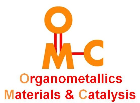Rhodium and iron catalyzed transformations via C-H, N-H and P-H activation
Transformations catalysées par le rhodium et le fer via des activations C-H, N-H et P-H
Résumé
This research work described the development of homogeneous rhodium and iron catalytic systems able to perform C-H/N-H and C-H/C-P bond functionalization for building C-C, C-N, C-P bonds, thus notably obtaining a variety of N- and P-containing heterocycles.First of all, β-ketophosphine oxides were prepared efficiently from secondary phosphine oxides and activated alkenes via the intermolecular oxophosphination catalyzed by Fe(OTf)₂ at 25 °C under blue LED irradiation. Noticeably, the mechanism studies highlighted the radical nature of the reaction.Still using iron catalyzed blue light promoted technology, a proof of concept for preparing benzo[b]phosphole oxides and 9-phenyltribenzo[b,e,g]-phosphindole 9-oxide from diphenylphosphine oxides and internal alkynes was established, using iron catalyst and TBHPoxidant at 25 °C under blue light irradiation. In the other hand, the second part of this research focused on Rh-catalyzed formationsof C-N bonds for the preparation of nitrogencontaining heterocycles. Rh(III)-catalyzed CH/C-N annulations were successfully accomplished, using [Cp*RhCl₂]₂ catalyst and Ag salt oxidants for the synthesis of six-membered and seven-membered 1,7 fused indoles, starting from 7-phenylindoles. By reaction withdiazomalonates, and catalytic amounts of[Cp*RhCl₂]₂, AgOAc and DBU, azepino[3,2,1-hi]indoles were prepared. Additionally, pyrrolo[3,2,1-de]phenanthridines were obtained in a one-pot fashion by reaction with activated alkenes, and [Cp*RhCl₂]₂ catalyst associated to AgOAc and Me4NOAc. Alternatively, an exogenous-oxidant-free rhodium version of these reactions was conducted by Rhelectrocatalysis using Pt cathode and graphite felt anode, with [Cp*RhCl2]2: Azepino[3,2,1-hi]-indoles were obtained by reaction with alkynes. Of notable interest, some of the described syntheses were promoted by more sustainable activation technologies: electrocatalysis avoiding to use of oxidants, or blue light irradiation, permitting to work at ambient conditions.
L’objectif de ce travail de thèse a été de développer des catalyseurs de rhodium et de fer pour activer et fonctionnaliser des liaisons C-H/N-H et C-H/C-P afin de créer des liaisons C-C, C-N, C-P bonds, et ainsi obtenir notamment des N- et P-hétérocycles. Dans une première partie de ce travail, des oxydes de β-cétophosphine ont été préparées à partir d’oxydes de phosphines secondaires et d’alcènes via une réaction d’oxophosphination catalysée par Fe(OTf)2 à 25°C sous irradiation par une lumière bleue. En particulier, le caractère radicalaire du mécanisme de la réaction a été démontré. En utilisant la lumière bleue et la catalyse au fer, une preuve de concept pour la préparation d’oxydes benzo[b]phosphole et de 9-oxyde de 9-phenyltribenzo[b,e,g]-phosphindole à partir d’oxydes de diphénylphosphine et d’alcynes internes a été établie en utilisant un catalyseur de fer, un oxydant (TBHP) à 25 °C sous lumière bleue. Dans une seconde partie, nous nous sommes focalisées sur la formation de liaisons C-N rhoda-catalysée pour la préparation d’hétérocycles azotés. Ainsi, des annulations C-H/C-N catalysées par des espèces de Rh(III) ont été réalisées en utilisant le catalyseur [Cp*RhCl2]₂ et des sels d’argent comme oxydants et ont permis de préparer des dérivés indoles polycycliques à 6 ou 7 chainons à partir de 7- phénylindoles. Par réaction avec des diazomalonates, avec de quantités catalytiques de [Cp*RhCl₂]₂, AgOAc et DBU, les dérivés azépino[3,2,1-hi]indoles ont été obtenus. Pour synthétiser les pyrrolo[3,2,1- de]phénanthridines à partir d’alcènes, l’association du catalyseur [Cp*RhCl₂]₂ et de AgOAc et Me4NOAc a été utilisée. Une version alternative sans utilisation d’oxydants externes a été développée par électrocatalyse, avec une cathode de Pt et une anode de graphite, et Cp*RhCl₂]₂ et a permis de préparer des azépino[3,2,1-hi]-indoles à partir d’alcynes. Il faut souligner que certaines réactions décrites sont promues par des technologies alternatives plus éco-compatibles telles que l’électrocatalyse, évitant l’utilisation d’oxydants ou par la lumière bleue permettant de travailler à température ambiante.
| Origine | Version validée par le jury (STAR) |
|---|

